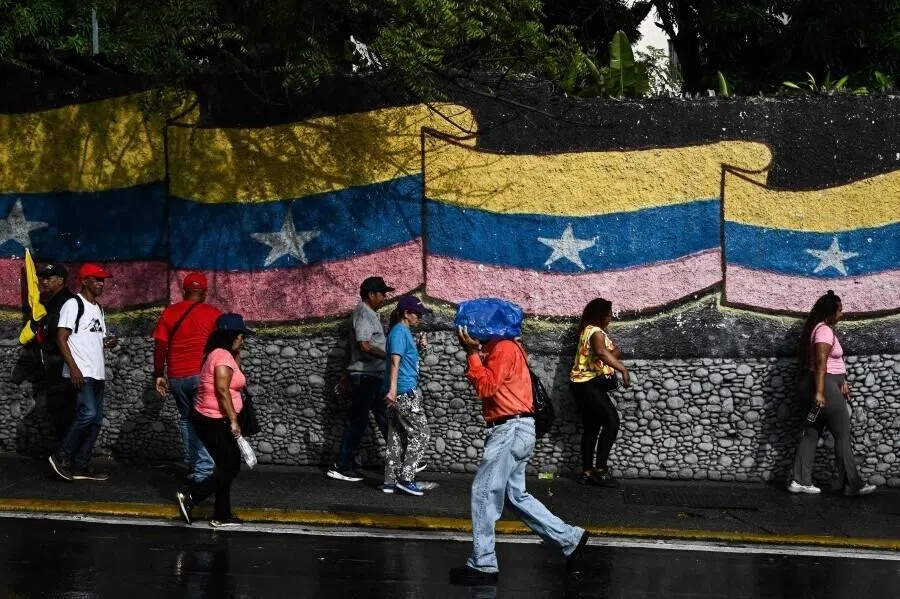BRI's Jakarta-Bandung high-speed railway: High costs but high returns
A few months after its inauguration, the Jakarta-Bandung high-speed railway, the first of its kind that China built overseas with its own integrated system of design, engineering, equipment, technology, and standards, is proving to be a harbinger of stronger and more extensive China-Indonesia economic cooperation.
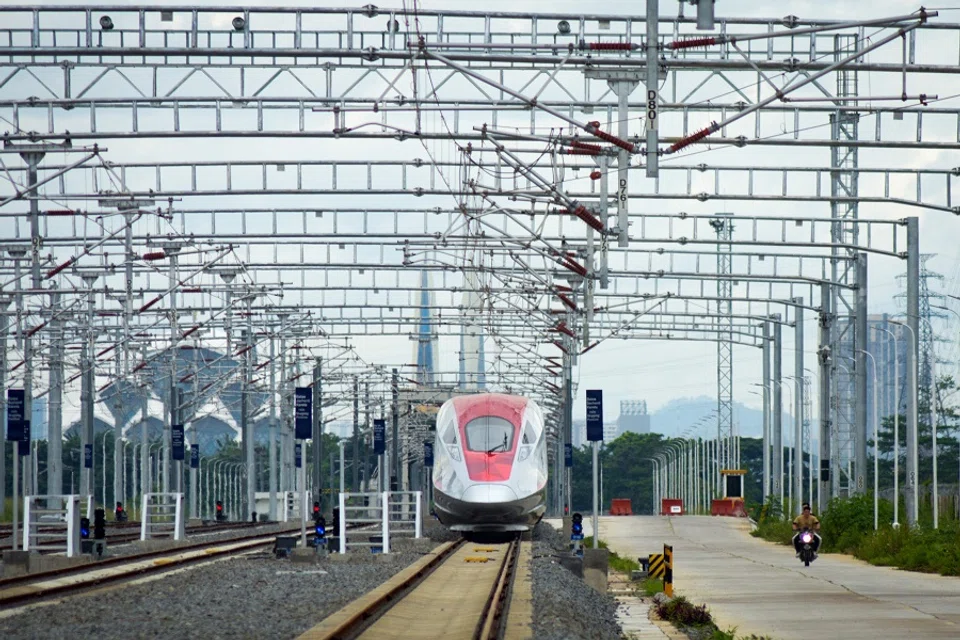
Symbols are important for both politics at the highest level and the official inauguration of a ground-breaking infrastructure project. The two came together when China's President Xi Jinping and Indonesia's President Joko Widodo jointly unveiled a plaque marking the official commercial launch of a China-built high-speed rail line linking Jakarta and Bandung, on 17 October 2023 in Beijing, at the Third International Forum for the Belt and Road Initiative (BRI).
As China had touted the Jakarta-Bandung High-speed Railway (HSR) as the flagship project for China-Indonesia cooperation through the BRI, the railway stands for Widodo's legacy of championing infrastructure development in Indonesia as he leaves office in October 2024. Besides its status as a signature and transformative project for Indonesia, the Jakarta-Bandung HSR also became the very first high-speed railway that China has built overseas with its own integrated system of design, engineering, equipment, technology and standards.
The railway at a glance
The Jakarta-Bandung HSR is the first high-speed train in Indonesia and in Southeast Asia. This 142-kilometre-long rail line connects Jakarta, the national capital, and Bandung, the capital of West Java. The Jakarta-Bandung HSR has four stations: one in East Jakarta (Halim Station), one in Karawang (Karawang Station), and two in Bandung Regency (Padalarang Station and Tegalluar Station).
Reaching a peak speed of 350 km/hr, the Jakarta-Bandung HSR has certainly lived up to its billing of cutting travel time between Jakarta and Bandung from three hours to around 40 minutes and solving congestion issues, which incur economic costs in the billions of rupiah every year.
While the Chinese bid had some additional advantages, such as technology transfer, Japan lost its bid mainly because of its insistence on obtaining a loan guarantee from the Indonesian government...
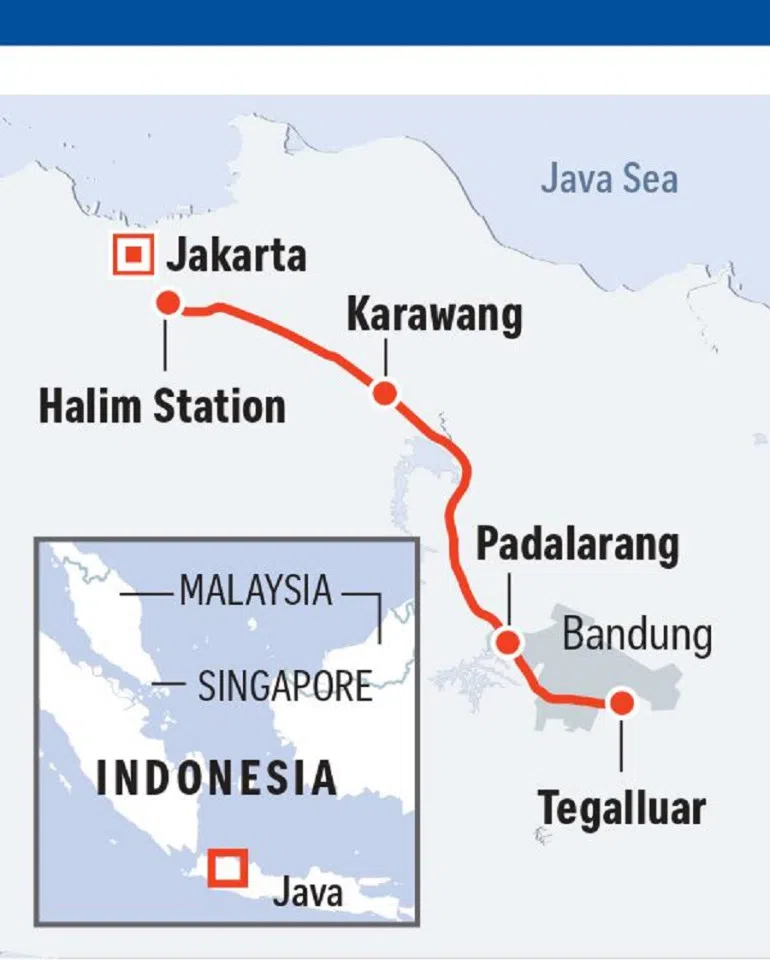
BRI's most expensive infrastructure project
In 2015, China and Japan competed to fund the Jakarta-Bandung HSR. After fierce competition, the Indonesian government chose China over Japan. While the Chinese bid had some additional advantages, such as technology transfer, Japan lost its bid mainly because of its insistence on obtaining a loan guarantee from the Indonesian government, which meant that Indonesia would lose some financial control and flexibility if it chose to work with Japan.
The project was developed by PT Kereta Cepat Indonesia China, a joint venture between a consortium of four Indonesian state-owned companies and China Railway International, a subsidiary of China Railway Group, in October 2015.
The Jakarta-Bandung HSR was tagged at US$6 billion, split between 75% in a loan from China and 25% contributed by Indonesian and Chinese shareholders. The loan will be for a 40-year period, with a ten-year grace period.
The rising construction cost and a pandemic-induced delay called for the Indonesian government to put up an extra US$1.2 billion to cover the eventual total cost of US$7.2 billion. This makes the Jakarta-Bandung railway the BRI's most expensive infrastructure project, more so than the China-Laos Railway, the Addis Ababa-Djibouti Railway, and the Mombasa-Nairobi Railway, all built by China, at a price range of US$4-6 billion each.
... 100 days after its operation, the railway carried a total passenger volume of 1.45 million persons, with the peak daily occupancy rate toping at 99.6% and number of riders at 21,537 persons.
Greater convenience and mobility
Despite its very high construction cost, the Jakarta-Bandung HSR has brought a number of benefits to Indonesia.
It has created around 51,000 jobs, led to a cumulative purchase of local materials and inputs worth US$5.1 billion, and provided technical training for 45,000 Indonesian workers, with the potential to generate new investment and manufacturing and commercial development along the route and around key stations.
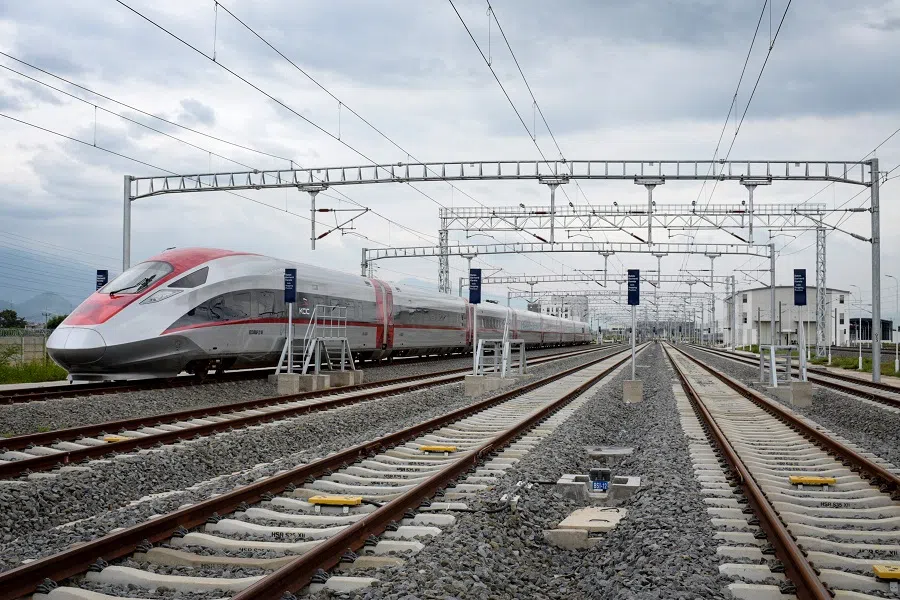
The Jakarta-Bandung HSR has also transformed travel between the two cities. By 25 January, 100 days after its operation, the railway carried a total passenger volume of 1.45 million persons, with the peak daily occupancy rate toping at 99.6% and number of riders at 21,537 persons. The number of bidirectional trains per day grew from 14 in October 2023 to 40 and 48 on the weekend today, with a cumulative number of 3,487 trains.
... the new railway has stimulated commercial activities of fast-food restaurants and convenience stores at the stations to meet travellers' needs.
This aggregate numerical effect aside, the Jakarta-Bandung HSR has made a real difference in travel and commuting on the ground. As more people take this new train, it has taken more cars off the only congested highway between Jakarta and Bandung. Passengers on the train include business people, families and tourists.
A woman working in Jakarta with family members in Bandung has taken the train almost every weekend. She boards the train at the Halim Station in Jakarta and arrives at the Padalarang Station near Bandung and then takes a short motorbike ride home. This trip saves her over two hours by bus or the slow train. A Jakarta-based male business executive who makes regular trips to Bandung rides the train for its comfort and to avoid traffic congestion.
As envisioned, the new railway has stimulated commercial activities of fast-food restaurants and convenience stores at the stations to meet travellers' needs.
Operational issues and high costs
While living up to its expected passenger volumes and commercial stimulus, the new railway has run into a number of challenges, including the power outage involving the Indonesia State Electricity Corporation, the scheduling gap with the feeder trains, suboptimal fare refund, and signal disruptions along the route.
More specifically, the feeder trains' limited seating capacity of 200 passengers is not compatible with the Jakarta-Bandung HSR's capacity of 601 passengers. The manual refund system, which requires passengers to go to the stations, delays the process and inconveniences passengers. The introduction of ticket-selling machines has alleviated this problem.
While dynamic pricing can help distribute fare costs more fairly, it is insufficient for overcoming the barrier of overall affordability...
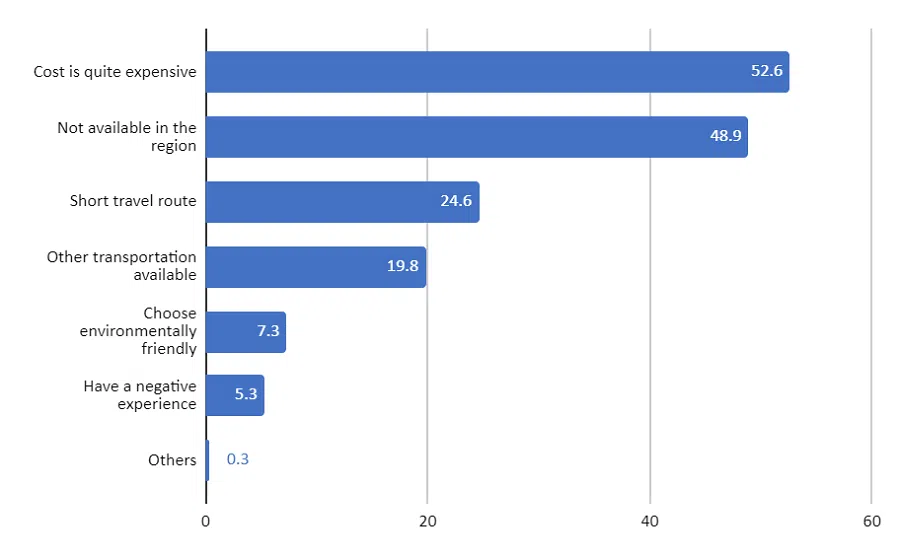
These operational issues aside, potential passengers have raised several factors discouraging them from taking the train.
Given the concern about high cost, the PT Kereta Cepat Indonesia China, which operates the Jakarta-Bandung HSR, has implemented a dynamic pricing scheme that raises ticket prices during peak hours and lowers during off-peak hours. As of 2 February, a first-class ticket costs IDR 600,000 (approximately US$38.30), a business class ticket IDR 450,000, while a premium economy class runs around IDR 150,000 to IDR 250,000.
While dynamic pricing can help distribute fare costs more fairly, it is insufficient for overcoming the barrier of overall affordability given the fare cost relative to the average wage in Indonesia in 2023 (IDR 3.2 million per month, as of August 2023).
Potential and prospects
Addressing the incompatibility in scheduling and carrying capacity between the Jakarta-Bandung HSR and other modes of feeder transport such as the Greater Jakarta Commuter Rail, the Mass Rapid Transit, the Light Rail Transit, and the Bus Rapid Transit, requires purposeful and efficient coordination of responsibilities and implementation among multiple agencies.
While in its infancy, the record of the Jakarta-Bandung HSR's operational success and challenges since its recent launch lays a solid foundation for it to play a bigger role in stimulating broader regional and national development in Indonesia over time.
As a ground-breaking and transformative project, this railway bodes well for stronger and more extensive China-Indonesia economic cooperation. This further benefit is more likely to occur if the current rail route can be extended to Surabaya to stimulate tourism and economic growth in the southern coastal regions of Java.
In short, the Jakarta-Bandung HSR is poised to deliver significant economic and social benefits to the region while setting new standards for transportation and connectivity.






